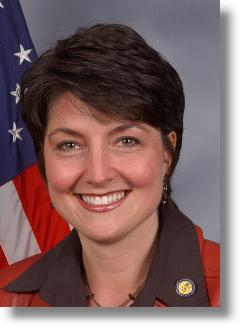Today, we’re all facing the painful reality of skyrocketing prices at the pump. In the Congressional District I represent, the 5th Congressional District in Eastern Washington, families, farmers and small business owners are struggling to pay to fill up their cars, tractors and trucks.
 Worldwide the demand for energy is increasing rapidly. Several countries that used to export natural gas have started to import, which affects the price farmers pay for fertilizer. In fact, the price of natural gas rose more than 400% between 2002 and 2005.
Worldwide the demand for energy is increasing rapidly. Several countries that used to export natural gas have started to import, which affects the price farmers pay for fertilizer. In fact, the price of natural gas rose more than 400% between 2002 and 2005.
In the 1950’s America was one of the leading exporters of oil. Today, we import nearly two thirds of it. Yet, since that time, we have done little to prepare for our country’s current or future energy needs. And we are suffering the consequences.
Energy is critical to our social, economic and national security. We can and we must start meeting American energy needs with American resources. It is time that we begin saying yes to American energy. We need a comprehensive energy solution. Right now in Congress, we’re debating how to move away from foreign oil, produce more of our energy here at home, and decrease our carbon emissions.
And these are all great goals – I support them. But the reality is, we need an adequate energy supply – today – at an affordable price. That means unlocking the energy supplies available to us today that include petroleum and natural gas sources in places like ANWR and on the Outer Continental Shelf. If carbon emissions are the problem, we should look for ways to sequester that carbon.
Secondly, we need to recognize the hydroelectric dams in the Pacific Northwest provide us with an abundant supply of clean, affordable, and renewable energy. That clean, renewable hydropower has kept the Northwest’s “carbon footprint” at half that of the rest of the nation. Removal of the Snake River dams would add 5.4 million tons of CO2 to the atmosphere each year.
It is time that we begin saying yes to American energy.
Another renewable source of energy comes from our national forests – but that energy is off limits. There is a perfect example of that in Eastern Washington. Avista Utilities opened the first wood-fired energy plant of its type in Kettle Falls in 1983. The plant uses wood chips and debris from mills and salvaged trees following forest fires. Using that waste wood, the plant has generated at least 6.3 million megawatts of power since 1983. When I visited the plant in November, it was shut down because there wasn’t enough available wood waste to operate the plant, despite being located next door to the Colville National Forest. Why? We can’t salvage burned timber, or trees the bark beetles are killing. So, operators of the plant in Kettle Falls must haul wood debris from 250 to 300 miles away. Seventy-five percent of the fuel they burn comes from Canada.
Congress says it wants to encourage alternative energy, including biomass, such as this project. But the energy bill passed in Congress last year prohibits any biomass from our federal forests. Congress needs to provide incentives – not put federal forests off limits.
Third, it means cutting the red tape to make the permitting process easier and bring more sources of energy online, whether it is wind, solar, biomass or nuclear. When I chaired the task force to update and reform the National Environmental Policy Act (NEPA), I learned the average time frame for obtaining a permit to produce natural gas has tripled. I learned the NEPA process has caused some producers to wait more than 10 years to get approval to market clean natural gas. Virtually every attempt to tap new sources of clean natural gas on federal lands has been met with expensive, time consuming and frivolous legal challenges. We need to make some changes.
And finally, we all have a role, in conserving the energy we already have, as we look for energy sources of the future. The largest source of energy we already have is the energy we waste every day. In homes today, many of us have replaced our old 60-watt light bulbs with the new coiled bulbs. If every household in America did that, we’d save enough energy to power a city of 1.5 million people.
I am excited about the next generation of fuels being developed – across the nation, and in Eastern Washington. In the Pacific Northwest, innovation is leading the way for the development of many new alternative energy sources. Right now wind farms in Washington State generate enough power to supply more than 400,000 homes with electricity.
Whether it’s oil sands, wind, the development of liquid coal, bio-diesel, hydrogen fuel cells, nuclear power or solar energy all of these sources of energy decrease our dependency on foreign oil and create new markets, stimulate the workforce, pass energy savings to the public, and help contribute to American energy. It is time we meet our growing energy demands with American energy – and no is not an answer.
–###–
Cathy McMorris Rodgers represents the 5th District of Washington in the U.S. House of Representatives. She is the Ranking Republican on the Natural Resources Subcommittee on Water and Power.




